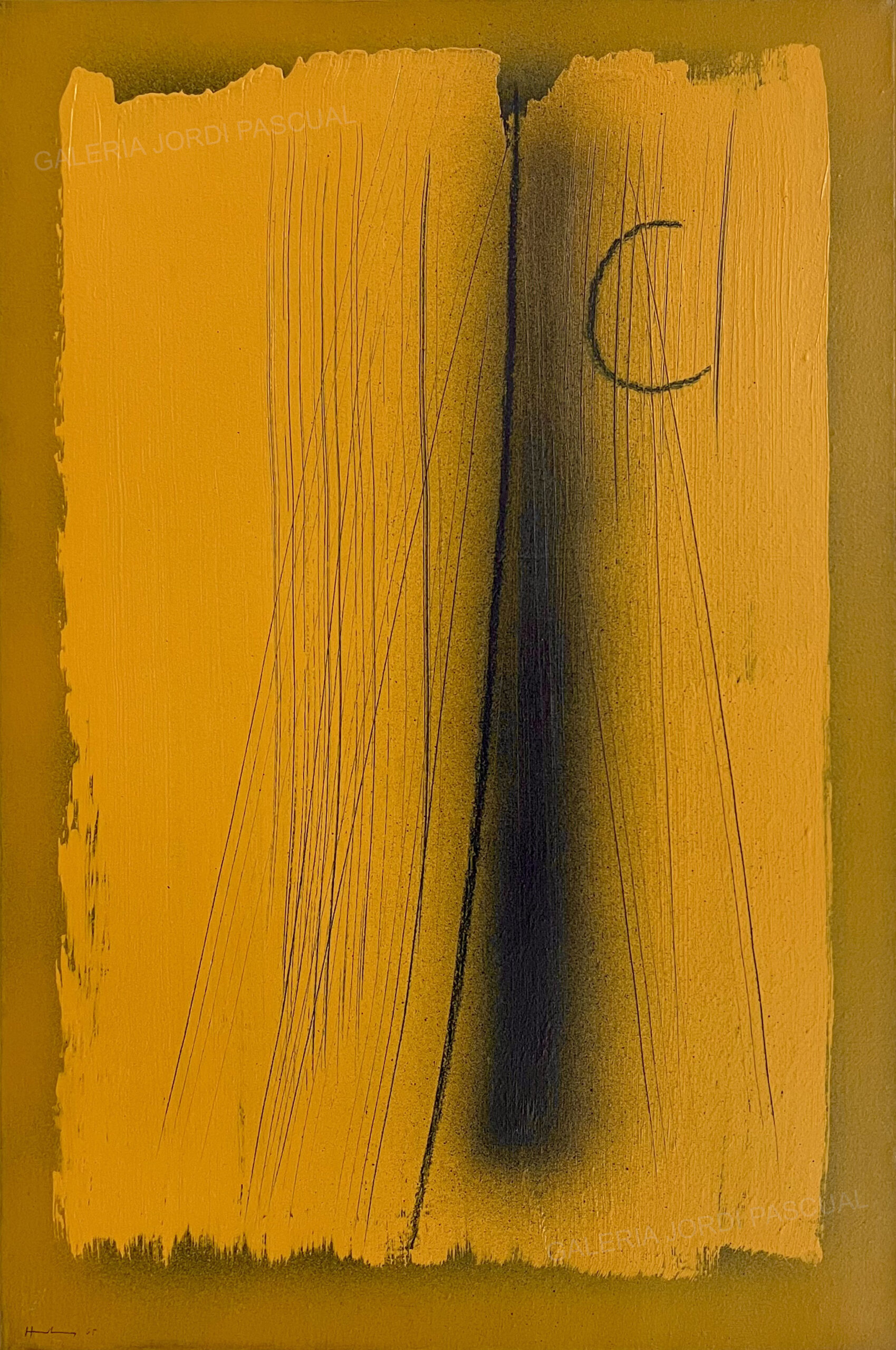Hartung, Hans

Hans Hartung was born in Lepzig, Germany in 1904. Since childhood he knew he wanted to be an artist, which brought him to study Fine Arts at the Akademie ser Schonen Kunste in his native city, and later on in Munich and Paris.
At the beginning of his career, he was influenced by the work of Rembrandt, Goya, Frans Hals, Greco and by the German expressionists Oskar Kokoschka and Emil Nolde. During this period, he wanted his paintings to simplify the figuration adopted by the classic masters, while conserving the strength of their use of color.
Galerie Heinrich Kühl, curated his first individual exhibition in 1930. Five years later, he abandoned nazi Germany and moved to Paris, where he began to paint watercolors and abstract works. He presented these in 1937 at Cezanne à l’Art Non-figuratif, a show organized by Christian Zervos at the Jeu de Paume. One year later, his artistic recognition travelled to London, with the exhibition 20th Century German Art at New Burlington Galleries.
In 1944, he joined the Foreign Legion in North Africa, however a serious accident led to the amputation of his right leg. After this moment, his canvases showed suffering through an abstract and lyrical style, characterized by wide somber masses traced with India ink, oil or pastel. These elements were inherent to tachisme, an artistic movement, which, for him, translated the despair and horrors of war.
With the help of Alexander Calder, he obtained the French nationality in 1946. Some time after, he became one of the most important artists in the second École de Paris. Galerie Lydia Conti presented his first individual exhibition in the city of the Seine, and from then on, his works were chosen for different renowned international shows. In 1968, the Musée National d’Art Contemporain in Paris honored him with a career retrospective, while in 1975, the Metropolitan Museum of New York featured a solo exhibition of his work.
Hartung stigmatized his painting using brooms, brushes or branches, creating a lyrical abstraction. His work always tried to fixate dynamism and the consistency of strength to create matter, light and spirit. As renowned art critic, Madeleine Rosseau wrote: “So then, a painting by Hartung is, without a doubt, a moment in the existence of the painter; but, more so, it is a moment in our civilization, with all its limits, dangers and hopes that come with it, and which in great measure, determine the personal attitude of each person”.




